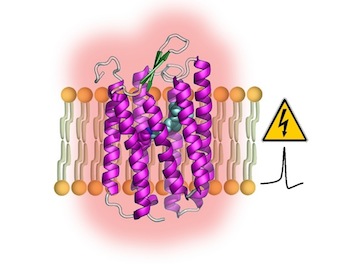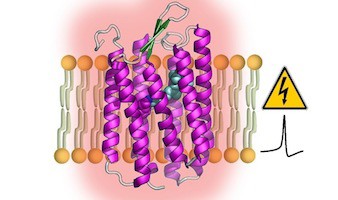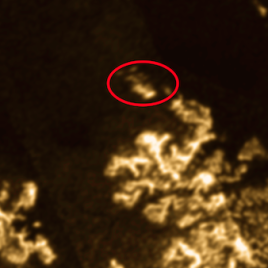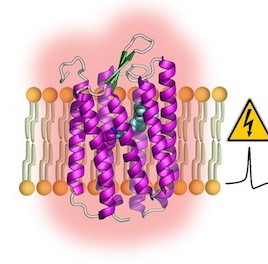
Newly engineered proteins called QuasArs emit red light when there is a change in the electrical charge across the cell membrane. The proteins could one day help researchers directly measure brain activity in living animals. (Image credit: Yongxin Zhao)
Scientists have developed a new protein capable of glowing red in response to electrical signals in neurons, a tool which could become a boon to brain researchers. The technology could one day be used to produce mice or fish with ‘glowing brains’ that could greatly improve the ability of neuroscientists to understand mental processes.
The proteins come from bacteria-like organisms called archaea, in which they work to turn sunlight into chemical energy; however they also have the unexpected property of lighting up in response to electrical changes.
The scientists used artificial selection over many generations to evolve brighter and brighter proteins, and successfully transferred the best ones into mammalian cells.
Original research paper published in the Nature Methods on June 22, 2014.
Names and affiliations of selected authors


